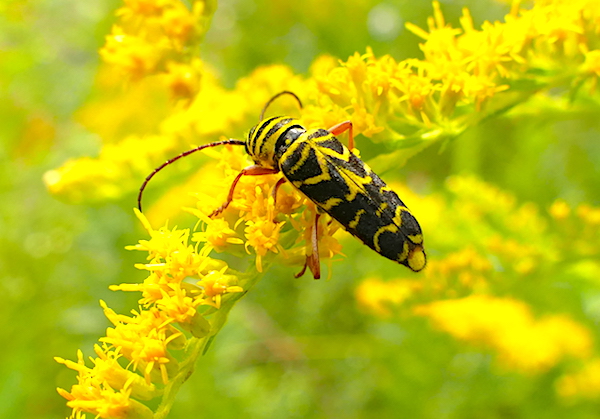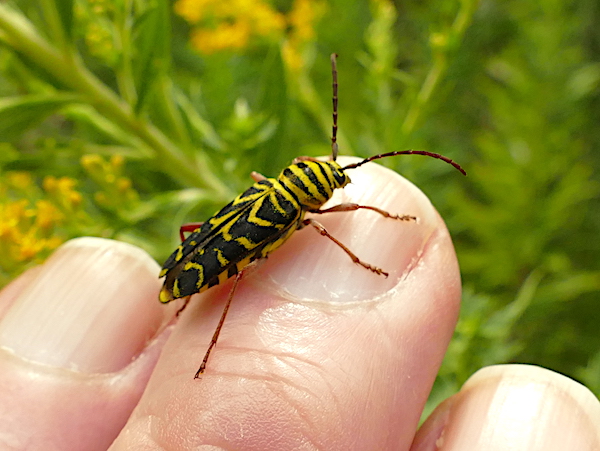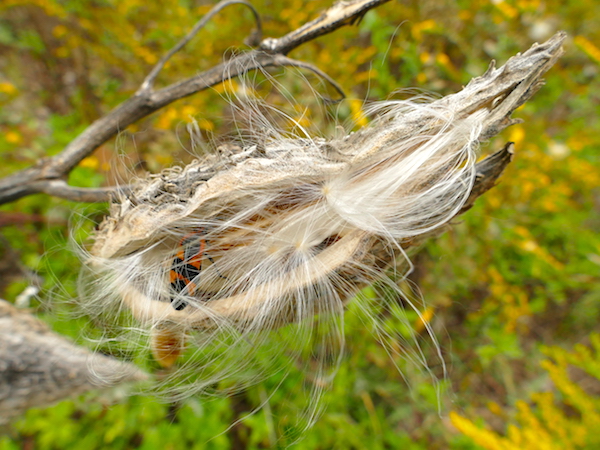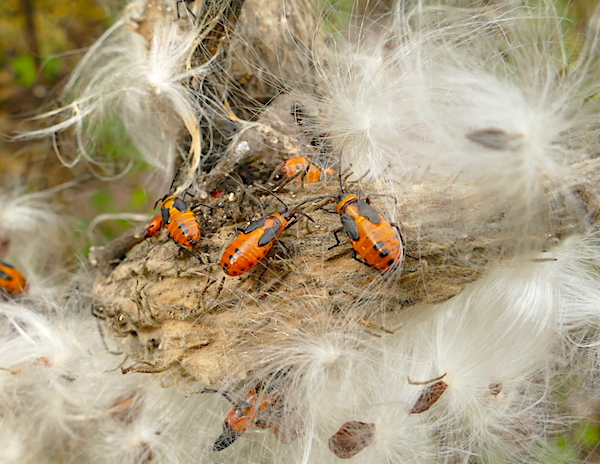Top Photo: Locust borer on goldenrod.
Each year as goldenrod puts forth flowers, I expect to see locust borers actively feeding on nectar from the bright yellow florets. The beetles are rather well camouflaged among the flowers and not always easy to find.

In late summer through fall, the adult beetles lay eggs in cracks of black locust bark. The hatching larvae burrow into the inner bark to overwinter. The warm temperatures of spring bring about renewed larval activity, and the grubs continue boring through the inner tree. Pupation occurs by mid-summer. By fall, look for the adults feeding on goldenrod.

Also visiting the goldenrod, were many bees, including carpenter bees.


Male carpenter bees (white face – shown here) can not sting due to the lack of a stinger. Only females are so equipped.
Milkweed pods have broken open and are dispersing their seeds via the wind.

Milkweed seeds can travel great distances from the mother plant.
Large milkweed bugs race to eat the seeds before they all slip off into the wind. Nymphs of the large milkweed bug cluster together on the seed pods.

Narrowleaf sunflower (Helianthuss angustifolius) is blooming in the wetlands. This six to eight foot tall perennial attracts bees, flies and other pollinating insects and birds to its bright yellow two to three inch composite flowers.


And finally, many thanks to Facilities Tech, Matt for changing out the wood shavings in our wood duck/hooded merganser nest box. The birds, and I, appreciate his enthusiasm, dedication and adeptness in undertaking and performing the job. Matt braved deep mud and European hornets to complete the task.
Thanks, Matt!

So far, the nest box has housed tree swallows, great-crested flycatchers, raccoons, and yes, wood ducks, plus various wasp species.